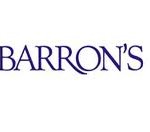Saturday, March 23, 2013
To Charles Fabrikant, business is all about capital allocation—how to mix and match assets and when to buy and sell. Even the paint used on his company’s many vessels is subject to his cost-conscious eye. That became clear 24 years ago when Fabrikant bought a small shipping outfit called Nicor and set out to give it a more nautical name. He hit on Seacor, he has said, “primarily because it was less costly to paint over two letters than the entire name.”
Seacor Holdings (ticker: CKH) has since become a major operator of cargo ships, work boats for oil rigs, tugboats, and barges—both in the U.S. and beyond. Nearly two-thirds of his 189 vessels now operate in foreign waters. Further afield, he manufactures fuel-grade ethanol and a form of alcohol used in hand sanitizers. In all, annual revenue is running at $1.5 billion, up fourfold from 10 years ago.


Fabrikant, 68, has constructed this portfolio deliberately and shrewdly, making the most of industry trends and insisting on good prices. His annual letters to shareholders, peppered with homespun investment wisdom, are eagerly awaited by his fans. Is all of this starting to sound familiar? Meet the Warren Buffett of barges.
“Charles Fabrikant is probably the best CEO/investor nobody’s ever heard of,” says Steven Roge of Roge Partners Fund, who holds the stock. Seacor’s book value has compounded at about 8% a year over the past decade, approaching the 10.6% recorded by Buffett’s Berkshire Hathaway. Seacor’s shares often trade at a 25% premium to book value, but at $71.83, they’re now about 20% below book. Roge, for one, sees that as a classic buying opportunity for long-term investors.
Over the past year, Seacor’s shares have returned about 3% after factoring in the spinoff of its aviation-services group and a $5 special dividend. Credit Suisse figures the company is worth $90 a share—25% above the current quote—on a sum-of-the-parts basis (see table). At 16 times estimated earnings for the coming 12 months, the stock trades roughly in line with the industry and offshore pure plays like Hornbeck Offshore Services (HOS) and Tidewater (TDW).
There’s something that could soon lift the shares: a pickup in oil drilling in the Gulf of Mexico. Sharply curtailed by the BP(BP) oil disaster of 2010, Gulf drilling is now coming back to life, with exploration outfits deploying more and more rigs. And Seacor, as it happens, is a top operator of supply and support boats for offshore oil and gas rigs, trailing only Tidewater.
SEACOR, which is based in Fort Lauderdale, Fla., and has a market value of $1.4 billion, is as much an investment company as ship operator, and Fabrikant, who owns 5% of the shares, stated so directly in his 2009 letter to shareholders: “Our asset base is diverse, and our horizon is broader than simply owning and operating equipment. We are a custodian of capital, and our mission is to use our expertise and knowledge to make money.”
Fabrikant serves as executive chairman after stepping down as CEO in 2010. But luckily for shareholders, he remains very active. His skillful buying and selling of assets has helped lift the stock 160% over the past decade. Just in the past year, Fabrikant not only spun off the aviation unit but also sold part of his environmental-services operation and an underperforming commodity-trading business, Seacor Energy; it went for $15 million, netting a gain of $7.1 million.
The Gulf’s comeback looks to be shaping up nicely. By Standard & Poor’s reckoning, the number of deepwater rigs operating in the Gulf is likely to increase to the mid-40s by the end of this year, up from 33 before the BP spill. As a result, Seacor could boost revenue from offshore marine business by 20%, which would help set the company up for a major gain in earnings. Credit Suisse is looking for profit of $3.58 per share this year, up from $2.95 per share the company reported for 2012, thanks to both strength in the Gulf and improving operating margins. Gains in the stock price could follow close behind.
For such an active deal maker, Fabrikant keeps a strikingly low profile on Wall Street. He eschews conference calls and earnings guidance, preferring to speak mostly through his shareholder letters. Partly as a result, only a few brokerage-house analysts cover the company. Seacor officials declined to comment for this article, saying we would have to wait until April for the release of Fabrikant’s 2012 letter. They wouldn’t even make a photo of Fabrikant available, and few are known to exist.
But Fabrikant has made no secret of his strategy: He goes wherever “opportunity knocks.” Last year alone, gains on the sale of assets comprised almost half of the company’s $61 million in net income. In his biggest buy last year, Fabrikant plunked down $134 million for 18 lift boats, which can rise on their own legs in shallow water to form stable work platforms.
That was a prescient move, says longtime fan Peter Ricchiuti, founder of the Burkenroad Reports, an equities research program at Tulane University that makes stock recommendations for the top-performing Hancock Horizon Burkenroad Small Cap Fund. “Shallow-water drilling is starting to recover in the Gulf,” Ricchiuti says.
Buffett has stumbled from time to time, and so has Fabrikant, who has taken the occasional impairment charge on an acquisition. Most notably, in 2010 the company recorded a charge of $18.7 million on ships it bought in 2005 from fellow offshore-marine operator Seabulk International. And some observers, such as analyst Stewart Glickman of Standard & Poor’s, are put off by the fact that the company counts on gains from asset sales to boost income. But Fabrikant has argued, in effect, that a dollar is a dollar, however earned, and can be used for share repurchase or a dividend. Seacor has retired more than 25% of its shares over the past six years. Though it doesn’t pay a regular dividend, it made a special payout of $5 a share in December, ahead of the dividend-tax increase.
Fabrikant keeps a shipshape balance sheet with $932 million of long-term debt partially offset by $281 million in cash and equivalents. Credit Suisse analyst Gregory Lewis is looking for Seacor to generate $231 million in operating cash flow this year, up from $190 million in 2012.
That should help float Fabrikant’s boats, and Seacor’s stock, for years to come.




